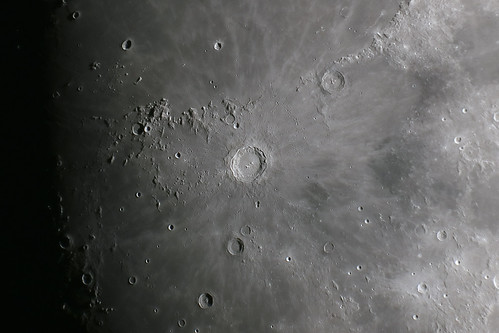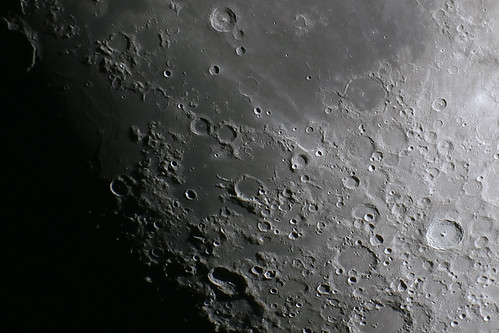16 April 2021, 22:00 – 00:30 (BST)
Seeing: Good
Transparency: Average
Conditions: Chilly, but not quite as bitter as recent nights. Breezy again, but frequency of gusts declined over the course of the session. A few small patchy clouds passing over.
With a new lunar cycle already underway this is likely to be the last deep-sky session for a while. The eyepiece of choice was the 13mm Ethos at 92x.
NGC 3344, galaxy, Leo Minor
Revisiting an object I first saw in subpar conditions in March 2020. Large amorphous round haze; condensed core with averted vision. Two bright field stars superposed on the face of the galaxy in a line east of the core. This is probably the best of the galaxies in Leo Minor.
NGC 3414, galaxy, Leo Minor
Mottled round haze in a busy star-field (the galaxy is surrounded by several moderately bright stars). Bright core, but not star-like.
NGC 3486, galaxy, Leo Minor
Large round haze, gradually brighter towards the centre. The inner region seemed slightly clumpy with averted vision.
NGC 3504, galaxy, Leo Minor
Small oval galaxy, aligned NW-SE; seemed quite bright. Star-like nucleus with averted vision.
NGC 3245, galaxy, Leo Minor
Extended ellipse, aligned roughly N-S. Bright core with averted vision.
NGC 3277, galaxy, Leo Minor
Small, very faint haze east of NGC 3245 (there’s a bright double star about halfway between the two galaxies). Tough to spot; I saw the core (which shows a star-like nucleus with averted vision) before I saw the rest of the galaxy.
NGC 4203, galaxy, Coma Berenices
Revisiting one from last year. Small round haze south of a bright 8th magnitude field star. Almost on the border with Canes Venatici. Bright core, stellar nucleus with averted vision.
NGC 3995, galaxy, Ursa Major
(Plotted in SA2000, not the PSA.) Very faint round haze, not helped by a bright 6th magnitude field star to the east hindering its visibility. Brighter towards the centre with averted vision.
At 23:10 I was distracted by some birds calling overhead and looked up to see a v-formation of what I assume were ducks or geese flying in an ENE direction, showing up quite pale against the night sky. The calls sounded higher in pitch than the honking I associate with species like greylags; white-fronted geese perhaps?
NGC 4062, galaxy, Ursa Major
Faint elliptical haze, aligned east-west, near the border with Coma Berenices. Not much in the way of detail other than a slight, very gradual brightening towards the centre.
NGC 4150, galaxy, Coma Berenices
Small oval haze; stellar core with averted vision. Faint field star SW, and a brighter one farther west. Another galaxy (NGC 4136) is plotted to the SW, but I couldn’t see it on this occasion.
NGC 4245, galaxy, Coma Berenices
Another round haze with a condensed core. Distinctive curved line of four 11th magnitude stars to the west.
NGC 4274, galaxy, Coma Berenices
Extended elliptical haze, east of NGC 4245. Aligned east-west. Brighter towards centre with averted vision.
 |
| NGC 4274 area in Coma Berenices (Stellarium) |
NGC 4278 and NGC 4283, galaxies, Coma Berenices
Small pair of hazy elliptical galaxies separated by 3 or 4 arcminutes; south of NGC 4274 and in the same field (though only NGC 4278 is plotted in the PSA.) Both show star-like cores with averted vision, but the western member of the pair (NGC 4278) is clearly bigger, brighter and more intense than the other.
NGC 4314, galaxy, Coma Berenices
Faint streak of light NE of NGC 4274 (this is a busy part of the sky for galaxies!). Bright core with averted vision and a faint, approximately 13th magnitude star on the NW tip. (I had my hopes up for a supernova, but it is a foreground object.)
NGC 4251, galaxy, Coma Berenices
Bright little lens-shaped galaxy, aligned east-west. Star-like core with averted vision. 13th magnitude field star to east.
NGC 4448, galaxy, Coma Berenices
Oval haze half a degree NE of bright 4th magnitude Gamma Comae Berenices (occupies the same field in the 13mm Ethos). Brighter towards centre with averted vision.
At 00:10, while taking a break from the eyepiece, I saw a slow meteor pass between the bright stars of Lyra and Draco, heading towards the northern horizon.
With fatigue starting to set in I opted for one more galaxy in an under-explored (for me) part of the sky to round off the session.
NGC 6217, galaxy, Ursa Minor
Amorphous round haze, near a loose band of bright stars. Brightens smoothly towards the centre; has the “feel” of a spiral galaxy even if I can’t see the spiral.
Nature note:
As well as the flock of birds noted earlier, I heard a fox barking very loudly on the street and another flurry of late-night singing from the resident dunnock.





